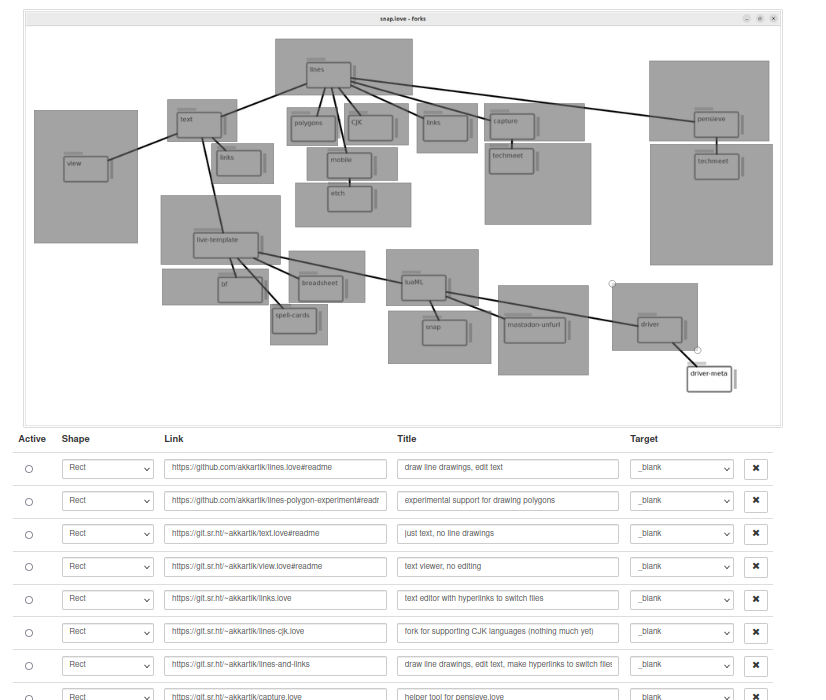This is the most insightful talk I've watched in recent memory.

Not pictured: keyboard shortcuts for structured navigation.
$ echo "never worn" |sed 's/ /^M/g'
wornr
What is going on here?
- I've had a server with Linode forever and been very happy. But I recently noticed it would periodically go inaccessible, perhaps after some idleness. Perhaps it had something to do with their acquisition. So I decided to switch providers.
- Back in 2009 when I created my website I built it in Rails (backed by files rather than a database) Last week I replaced all that with raw html, generated with a tiny Lua script. It's nice to be able to unsubscribe from some mailing lists of vulnerability notifications.
- I've been backing up my local laptop to my server, but that was causing me to overflow my disk. Cloud servers are a relatively expensive way to get storage. So I decoupled those concerns and now back up my laptop to rsync.net.
All in all, I'm much happier with my server. It's leaner, runs less stuff, and it'll be easier to move next time. With the way we've been seeing services degrade lately, I think it's useful to be thoughtful about how we cobble together our personal digital infrastructure, architect it to be nimble and easy to move around. If you keep options open you'll be less likely to need to use them.
Hopefully there's no discernable difference from the outside :crossed_fingers:
'-'.
Today's head-scratcher:
> ('00-43'):match('^(%d%d)-(%d%d)')
00 43
> ('00-43'):match('^%d%d-(%d%d)')
nil
I should just always escape it ('%-') as a matter of course.
My Freewheeling Apps kinda abuse git, and I've been watching for problems to arise from this friction.
Most software tries to keep branches short-lived. Merging is the point of a branch. My apps are long-lived forks that never merge, only occasionally cherry-pick.
Today I noticed a pattern: a file has been deleted in a fork and reintroduced in a later fork. Changes to it won't make it over that chasm without manual help.
How big is this problem? I wrote a quick and dirty visualizer which highlights chasms as the black lines. The short lines are false positives, so it's not a big problem. Yet.
How I built this:
- topologically sort my forks (columns) so parents come before descendants, children stay close to parents
- hash files in each fork so filenames show up in the same row
- zoom my terminal way out
- highlight long runs of spaces

After I posted my talk yesterday, Konrad Hinsen suggested appending a list of links to all the forks I mentioned. Searching around, I found a neat service called image-map.net which made my image of forks clickable with relatively low effort.
The only drawback: link coordinates are not normalized. So if you resize your the links all break.

